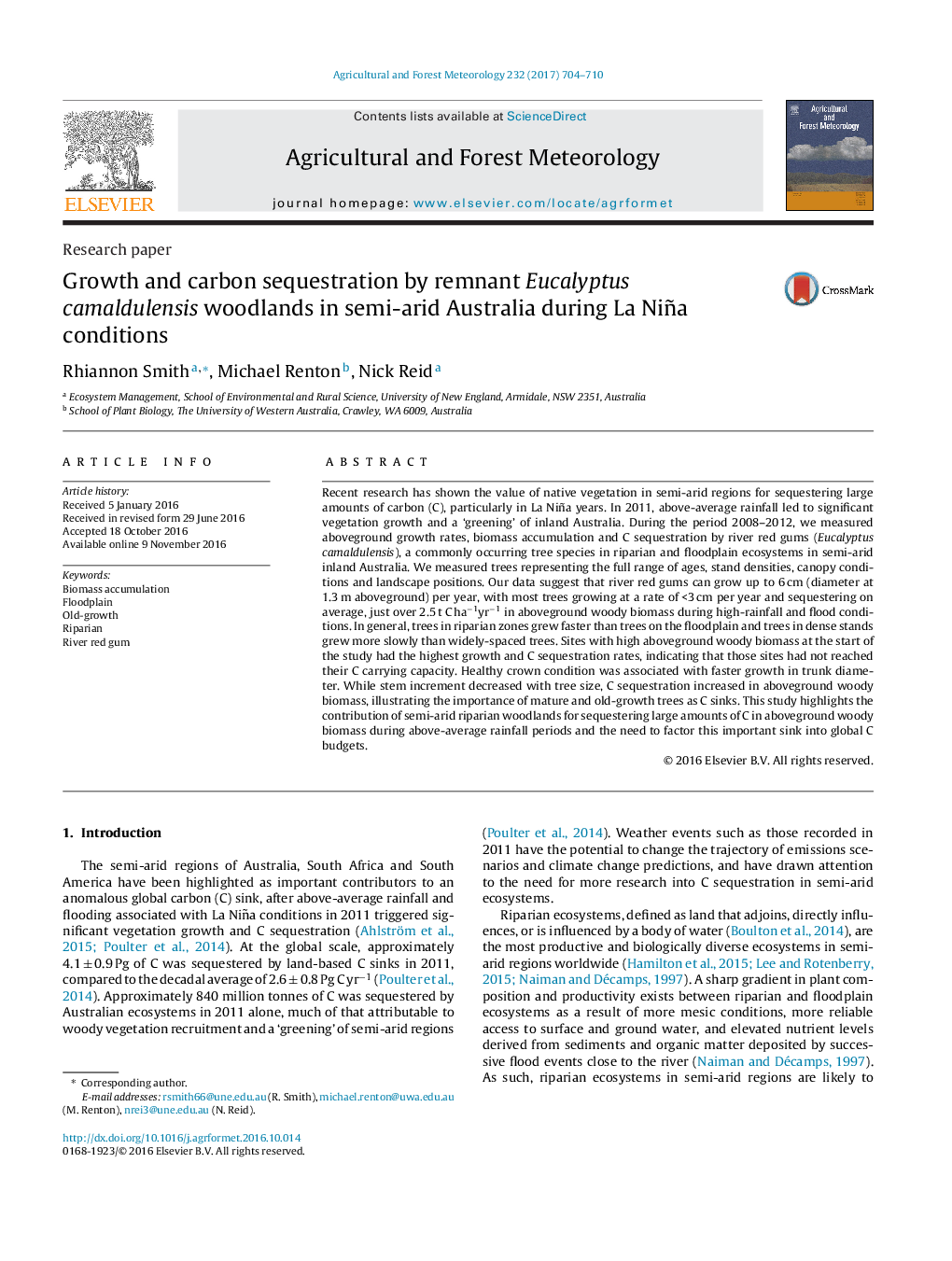| Article ID | Journal | Published Year | Pages | File Type |
|---|---|---|---|---|
| 6458175 | Agricultural and Forest Meteorology | 2017 | 7 Pages |
â¢River red gum saplings can grow 6 cm yearâ1 during multi-year, high-rainfall periods.â¢River red gums sequester large amounts of carbon under La Niña high-rainfall conditions.â¢Old-growth river red gum communities are important for carbon sequestration.
Recent research has shown the value of native vegetation in semi-arid regions for sequestering large amounts of carbon (C), particularly in La Niña years. In 2011, above-average rainfall led to significant vegetation growth and a 'greening' of inland Australia. During the period 2008-2012, we measured aboveground growth rates, biomass accumulation and C sequestration by river red gums (Eucalyptus camaldulensis), a commonly occurring tree species in riparian and floodplain ecosystems in semi-arid inland Australia. We measured trees representing the full range of ages, stand densities, canopy conditions and landscape positions. Our data suggest that river red gums can grow up to 6Â cm (diameter at 1.3Â m aboveground) per year, with most trees growing at a rate of <3Â cm per year and sequestering on average, just over 2.5Â t CÂ haâ1yrâ1 in aboveground woody biomass during high-rainfall and flood conditions. In general, trees in riparian zones grew faster than trees on the floodplain and trees in dense stands grew more slowly than widely-spaced trees. Sites with high aboveground woody biomass at the start of the study had the highest growth and C sequestration rates, indicating that those sites had not reached their C carrying capacity. Healthy crown condition was associated with faster growth in trunk diameter. While stem increment decreased with tree size, C sequestration increased in aboveground woody biomass, illustrating the importance of mature and old-growth trees as C sinks. This study highlights the contribution of semi-arid riparian woodlands for sequestering large amounts of C in aboveground woody biomass during above-average rainfall periods and the need to factor this important sink into global C budgets.
